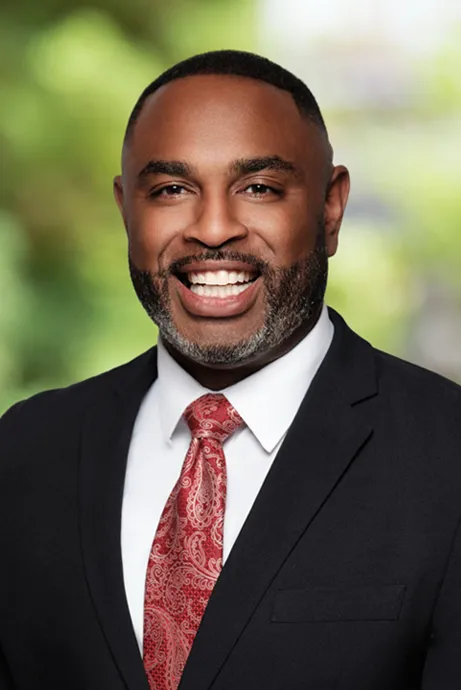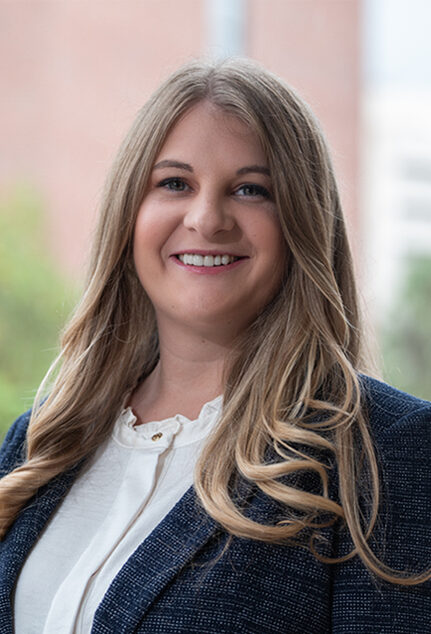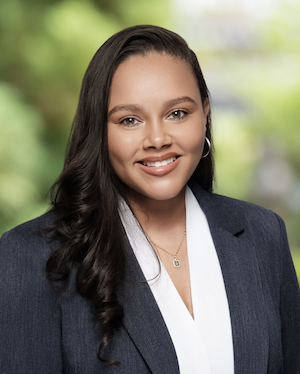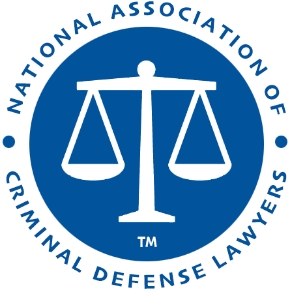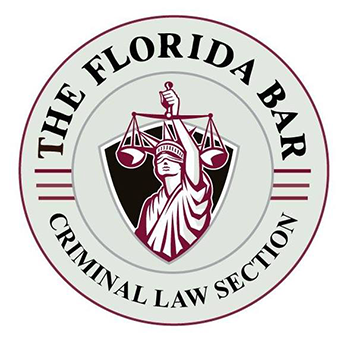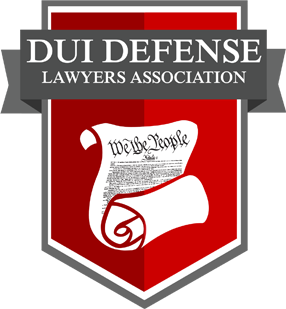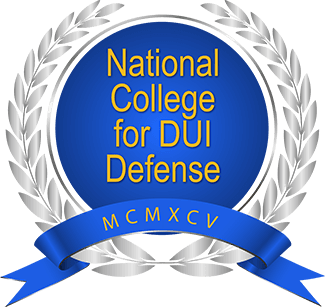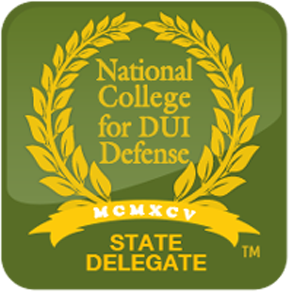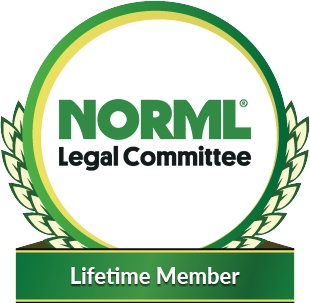Child Hearsay Statements
Section 90.803(23)(a), Florida Statutes (2016), provides—under specific circumstances—for the admission of hearsay statements from a child “with a physical, mental, emotional, or developmental age of 16 or less” if those statements describe “any act of child abuse or neglect.”
Under § 90.803(23)(a)(1), before the statement can be deemed admissible, the trial court must conduct a hearing outside of the presence of the jury and find that “the time, content, and circumstances of the statement provide sufficient safeguards of reliability.”
As required by § 90.803(23)(a)(2)(b), if the child is unavailable to testify as a witness, the statement is admissible only if “there is other corroborative evidence of the abuse or offense.”
Although the courts do not expect flawless statements from any witness, the trial court must explain why the indicators of unreliability can be overcome and why the court is assured of reliability notwithstanding statements that call it into question.
When it comes to the admission of child hearsay statements at trial, the courts recognize that young children are not held to the same standards as adults, particularly young children alleged to have suffered appalling abuse.
If the prosecutor files a “notice of intent to introduce child hearsay statements,” then the criminal defense attorney might file a “Motion to Strike Notice of Intent to Rely on Hearsay Statements of a Child Victim” and a “Motion in Opposition of the Use of Child Hearsay.”
A hearing is then scheduled on the motions. This hearing becomes one of the most important parts of the case.
During the hearing on the motions, the defense will often show evidence of significant familial discord such as allegations of domestic violence or a pending separation or anticipated child custody battle.
In some cases, those prior difficulties between the child’s caregivers and the accused can give the child a motive to fabricate the allegation.
Attorney on the Child Hearsay Rule in Florida
The attorneys at the Sammis Law Firm are experienced in fighting cases of abuse and neglect. Many of these cases involve attempts by the prosecutor to introduce child hearsay statements.
If you are charged with a crime against a child involving abuse, then contact an experienced criminal defense attorney for cases in Tampa or Hillsborough County, FL, and the surrounding areas in Tampa Bay.
The prosecutor will often seek to admit statements that involve inaccurate, nondescript, general, and use vague type terms. The job of the criminal defense attorney is to show the court the reasons why this evidence should be excluded from the trial.
If the court excludes the hearsay statements, it might mean that the charges will be dropped, the prosecutor will offer a better plea deal before trial, or the chances of a “not guilty” verdict increase at trial.
On December 5, 2018, the jury returned a “not guilty” in a case pending before the Honorable Susan L. Barthle in Dade City, FL. The crime of Lewd and Lascivious Molestation is a first degree felony, punishable by life in prison (with a 25 year minimum mandatory prison sentence).
Instead of facing those penalties, our client was exonerated and walked out of the courthouse with us after the jury returned the “not guilty” verdict. Leslie M. Sammis was the lead attorney in the case.
Disclaimer: The facts of your case may differ from the facts discussed here. Not all case results are listed here. The case results discussed here are not necessarily representative of the results obtained in all cases. Each case is different and must be evaluated and handled on its own merit.
The prosecutor’s attempt to admit child hearsay is common sexual battery and lewd and lascivious cases.
We represent clients at the courthouses in Tampa in Hillsborough County, in Brooksville in Hernando County, in New Port Richey and Dade City in Pasco County, and in Bartow in Polk County, FL. Our main office is in downtown Tampa, FL. Our second office is located in New Port Richey in Pasco County.
Call (813) 250-0500 today.
The Notice of Intent to Introduce Child Hearsay Statements
Before these statements are admissible at trial, the prosecutor with the State Attorney’s Office will file a motion called a “notice of intent to introduce child hearsay statements.”
In response, the criminal defense attorney might file a “Motion to Strike Notice of Intent to Rely on Hearsay Statements of a Child Victim” and a “Motion in Opposition of the Use of Child Hearsay.”
The court must then conduct a hearing to determine whether the statements will be admitted at trial or not. The hearing is one of the most important parts of the case.
After an allegation of sexual battery or lewd and lascivious molestation, the child will often be interviewed during a forensic interview conducted by the Child Protection Team (“CPT”).
In those cases, the trial court will review the videotaped CPT interview and hear the testimony of the CPT case specialist who conducted the forensic interview with the child.
The Child Protection Team at Pasco Kids First, Inc., is one of the only facilities in the state that does not record the forensic interview. For Pasco County, these forensic interviews take place at the Children’s Advocacy Center at Pasco Kids First, Inc., which is located at 7344 Little Road in New Port Richey, FL.
The prosecutor might also seek to admit the hearsay statements from the initial outcry that are often made to a parent, relative, or a teacher. In some cases, additional statements will be made to the first officer to make a report or a Child Protection Investigator (CPI) employed by the sheriff’s office.
Strict Compliance with the Townsend Factors
Courts in Florida have explained that for a child hearsay statement to be admissible at trial, the court must hold a hearing outside the presence of the jury to determine if the statement meets two reliability conditions:
“(1) the source of the information through which the statement was reported must indicate trustworthiness; and
(2) the time, content, and circumstances of the statement must reflect that the statement provides sufficient safeguards of reliability.”
State v. Townsend, 635 So.2d 949, 954 (Fla.1994). The suggested factors for courts to consider in making this determination may be found in both statutory and case law as provided in § 90.803(23)(a)(1) and in the Townsend case at 635 So.2d at 957–58.
Under § 90.803(23)(a)(1), child hearsay statements are admissible when the trial court fulfills its responsibility to place on the record specific findings of fact that “the time, content, and circumstances of the statement provide sufficient safeguards of reliability.”
The courts have concluded that child hearsay statements were properly admitted where the trial court analyzed the statements according to the factors suggested by section 90.803(23)(a)(1) and Townsend.
The court must make specific findings concerning the reliability of the statements that were supported by competent, substantial evidence.
Examining the Townsend Factors for Child Hearsay
In State v. Townsend, 635 So.2d 949, 954 (Fla.1994), the Florida Supreme Court explained that the two “strict trustworthiness and reliability requirements” were established “to balance the need for reliable out-of-court statements of child abuse victims against the confrontation and due process rights of those accused of child abuse.”
The court noted that “the first requirement was added to ensure a careful examination of the source, particularly when … the circumstances involve marital discord between the child’s parents and the possibility exists that one parent might be using the child to seek some advantage over the other parent.”
Section 90.803(23)(a), Florida Statutes (2012), provides in pertinent part that “[u]nless the source of information or the method or circumstances by which the statement is reported indicates a lack of trustworthiness, an out-of-court statement made by a child victim” under the age of eleven concerning an act of child sexual abuse is admissible in evidence if:
- The court finds in a hearing conducted outside the presence of the jury that the time, content, and circumstances of the statement provide sufficient safeguards of reliability; and
- In making its determination, the court may consider the mental and physical age and maturity of the child, the nature and duration of the abuse or offense, the relationship of the child to the offender, the reliability of the assertion, the reliability of the child victim, and any other factor deemed appropriate.
In addition to the factors suggested in section 90.803(23)(a)1., the court may consider other factors may including:
- a consideration of the statement’s spontaneity;
- whether the statement was made at the first available opportunity following the alleged incident;
- whether the statement was elicited in response to questions from adults;
- the mental state of the child when the abuse was reported;
- whether the statement consisted of a child-like description of the act;
- whether the child used terminology unexpected of a child of similar age;
- the motive or lack thereof to fabricate the statement;
- the ability of the child to distinguish between reality and fantasy;
- the vagueness of the accusations;
- the possibility of any improper influence on the child by participants involved in a domestic dispute; and
- contradictions in the accusation.
Other factors considered by the court include:
- whether the conversation was friendly and open;
- whether the child appeared to understand the difference between the truth and a lie for a child of that age and cognitive abilities;
- whether the child could accurately identify all the body parts;
- whether reasons existed for the child to lie or be coached;
- whether the description was vague or details; and
- whether open-ended questions were asked.
A trial court must make specific findings of fact on the record as to the basis of its ruling. § 90.803(23)(c), Fla. Stat.; see also Townsend, 635 So.2d at 957.
A Child’s Nonsensical and Nonresponsive Answers
In Salter v. State, 500 So.2d 184, 185–86 (Fla. 1st DCA 1986), the Court found:
Authorities indicate that in order to balance the need for reliable out-of-court statements of child abuse victims against the rights of the accused, the Legislature enacted this exception which will apply only if a number of foundation requirements have been shown to exist. See Ehrhardt, Florida Evidence, § 803.23(a) (2d Ed.1984).
Specifically, before the trial court may admit the statement of a child who testifies during the trial under this exception, the trial court is required to:
- hold a hearing outside the presence of the jury to determine that the circumstances surrounding the making of the statement demonstrate that the statement is reliable; and
- make specific findings of fact on the record setting forth the reasons why the trial court determined that the statement was reliable and why the reasons indicating lack of reliability were discounted.
Finally, the prosecution is required to give the defendant all of the following:
- notice of its intent to offer at trial a statement under the child hearsay statements;
- the notice must include the contents of the child’s statement;
- the time the statement was made;
- the circumstances surrounding the statement which indicates its reliability, and
- any other particulars necessary to provide full disclosure of the statement.
In Weatherford v. State, 561 So.2d 629, 633 (Fla. 1st DCA 1990), the court found that the trial court erred by not complying with section 90.803(23)(c)’s requirement “to make specific findings of fact on the record, setting forth the reasons the court determined the out-of-court statements to be reliable, and the reason it discounted any indications of a lack of reliability. Griffin v. State, 526 So.2d 752, 757 (Fla. 1st DCA 1988)”).
Section 90.803(23)(c), Florida Statutes, requires only that “the court shall make specific findings of fact, on the record, as to the basis for its ruling under this subsection.” There is no statutory requirement that findings necessarily reflect a balance of indicia of unreliability with indicia of reliability. See Ehrhardt, Florida Evidence, section 803.23(a) (2d ed. Supp.1989).
Ehrhardt indicates that the statutory provision regarding findings on the record “envisions that the court will set forth the specific reasons that the court relied upon as well as why the reasons indicating a lack of reliability were discounted.” Ehrhardt, Florida Evidence (2d ed. Supp.1989) (emphasis added). This portion of Ehrhardt is quoted in Salter v. State, 500 So.2d 184, 185 (Fla. 1st DCA 1986), and Griffin v. State, 526 So.2d 752 (Fla. 1st DCA 1988)
The Child Hearsay Statements Rule When Applied to Young Children
The younger the child, the less likely the court is to admit the hearsay statements because young witnesses:
- often don’t quite grasp adult questions;
- are not as articulate; and
- their cognitive abilities just simply aren’t as good.
With this explanation of less reliable aspects of her interview, as part of deciding that the statement was sufficiently trustworthy and reliable, the trial court satisfied what the statute and our precedents require for purposes of § 90.803(23), Florida Statutes.
The courts do not expect seamless testimony from the child witness. Under § 90.803(23), Fla. Stat., the statute provides that:
“In making its determination, the court may consider the mental and physical age and maturity of the child … and any other factor deemed appropriate.”
In Rodriguez v. State, 77 So.3d 649, 651 (Fla. 3d DCA 2011), the court described that “the child’s answers were given using words consistent with a child her age”.
In Means v. State, 814 So.2d 1136, 1137 (Fla. 1st DCA 2002), the court recognized that the child’s testimony was “inconsistent with the exact details.”
A more careful examination of the victim may be necessary “particularly when … one parent might be using the child to seek an advantage over the other parent,” the trial court found that this wasn’t such a case. State v. Townsend, 635 So.2d 949, 954 (Fla.1994).
Cross Examination on the Child’s Reliability
If the court allows the child hearsay because it finds the statement reliable for purposes of admission as evidence at trial, then the defendant’s attorney is permitted to cross-examine the child victim before the jury and vigorously attack the statement’s reliability.
As the court explained in Mikler v. State, 829 So.2d 932, 934 (Fla. 4th DCA 2002), a safeguard of reliability exists where a child testifies at trial and is available for cross-examination.
History of the Child Hearsay Exception
In 1985, the Legislature enacted section 90.803(23), creating a hearsay exception for a child victim’s “trustworthy and reliable ” out-of-court statements describing sexual abuse. Townsend, 635 So.2d at 953.
Central to the new statutory exception was its “strict trustworthiness and reliability requirements,” which the Legislature recognized were necessary to preserve defendants’ constitutional rights. Id. at 954 (citing Weatherford v. State, 561 So.2d 629 (Fla. 1st DCA 1990); Salter v. State, 500 So.2d 184 (Fla. 1st DCA 1986)); see also id. (“[T]he reliability requirements of this statute are essential in assuring the constitutionality of this exception.”).
The statutory provision establishing the hearsay exception lays out its detailed procedural requirements. § 90.803(23), Fla. Stat. (2015). Before introducing child-hearsay evidence, the State must provide the defendant notice of its intent, complete with a description of the evidence, “the circumstances surrounding the statement which indicate its reliability, and such other particulars as necessary to provide full disclosure of the statement.” Id. at (23)(b).
The court must “find[ ] in a hearing conducted outside the presence of the jury that the time, content, and circumstances of the statement provide sufficient safeguards of reliability.” Id. at (23)(a)(1). And the court must “make specific findings of fact, on the record, as to the basis for its ruling.” Id. at (23)(c).
Finally, the exception applies only if the child testifies “or is judicially found to be unavailable as a witness.” Townsend, 635 So.2d at 954; see also § 90.803(23)(a)(2), Fla. Stat. (2015).
Reasons to Exclude the Child Hearsay Statements
After a hearing on the child hearsay statements, the defense will often argue that the “time, content, and circumstances of the statement” did not “provide sufficient safeguards of reliability,” § 90.803(23)(a), Fla. Stat. In these cases, the hearsay statements are not admissible because they were not “clearly reliable,” Townsend, 635 So.2d at 951.
To determine whether hearsay statements are clearly reliable, the trial court must “examine the ‘totality of the circumstances’ surrounding the making of the statement ‘that render the declarant particularly worthy of belief.’ ” Conner v. State, 748 So.2d 950, 957 (Fla.1999) (quoting Idaho v. Wright, 497 U.S. 805, 819, 110 S.Ct. 3139, 111 L.Ed.2d 638 (1990)).
The statute “envisions that [trial courts] will set forth the specific reasons that [they] relied upon and not merely recite the statutory requirements relating to reliability.” Feller v. State, 637 So.2d 911, 915 (Fla.1994). We review the trial court’s reliability determination and the sufficiency of its factual findings only for an abuse of discretion. Elghomari v. State, 66 So.3d 416, 418–19 (Fla. 4th DCA 2011).
The Timing of the Child Hearsay Statements
The courts generally accept that close temporal proximity between a hearsay statement and the event it describes can be an indication of reliability. In fact, the premise underlying the “excited utterance” exception “is that such statements are given under circumstances that eliminate the possibility of fabrication, coaching, or confabulation, and that therefore the circumstances surrounding the making of the statement provide sufficient assurance that the statement is trustworthy and that cross-examination would be superfluous.” Wright, 497 U.S. at 820, 110 S.Ct. 3139.
In Ohio v. Roberts, 448 U.S. 56, 66, 100 S.Ct. 2531, 65 L.Ed.2d 597 (1980), the court found that
“Reliability can be inferred without more in a case where the evidence falls within a firmly rooted hearsay exception. In other cases, the evidence must be excluded, at least absent a showing of particularized guarantees of trustworthiness.”), abrogated on other grounds by Crawford v. Washington, 541 U.S. 36, 124 S.Ct. 1354, 158 L.Ed.2d 177 (2004).
For example, the Florida statutory provision on excited utterances creates a hearsay exception for a “statement or excited utterance relating to a startling event or condition made while the declarant was under the stress of excitement caused by the event or condition.” § 90.803(2), Fla. Stat. (2016) (emphasis added). At least for the hearsay exception for an excited utterance, it applies only to statements “made before there was time to contrive or misrepresent.” State v. Jano, 524 So.2d 660, 661 (Fla.1988).
Other firmly rooted hearsay exceptions rely on timing as an indication of reliability. For example, § 90.803(1), Fla. Stat. (2016) provides that: “A spontaneous statement describing or explaining an event or condition made while the declarant was perceiving the event or condition, or immediately thereafter ….” “Then-existing mental, emotional, or physical condition.”). Even for records of regularly conducted business activity, the records must be “made at or near the time by, or from information transmitted by, a person with knowledge”).
The court recognizes the general relationship between timing and reliability. As a result of this connection, the child-sex-abuse hearsay exception specifically requires that: “[t]he time of the out of court statements, relative to the time of the incident … [is] critical to a determination of reliability.” Jaggers v. State, 536 So.2d 321, 324 (Fla. 2d DCA 1988), disapproved on other grounds by Pantoja v. State, 59 So.3d 1092 (Fla.2011).
When allowing hearsay evidence under this exception, the courts routinely cite the close proximity between the child’s statements and the charged abuse. For example, in Perez v. State, 536 So.2d 206, 211 (Fla.1988), the order allowing the statements included finding that the statement came “either four days after or the evening after it happened, which is fairly recent”).
In Mikler v. State, 829 So.2d 932, 935 (Fla. 4th DCA 2002), the order included finding that the “statement was made on the same day of the incident”.
The Circumstances of the Child Hearsay Statements
The statute anticipates a level of specificity. As explained in Feller, 637 So.2d at 915, “Section 90.803(23)(c) envisions that the court will set forth the specific reasons that it relied upon and not merely recite the statutory requirements relating to reliability. In the instant case, the court did not indicate what circumstances it relied upon ….” (citation omitted)).”
If the court finds portions of the statements to indicated unreliability because they made no sense or were completely unresponsive, then the court must make an effort to explain how these portions and their implications fit into its decision.
Although a finding that a statement is reliable and trustworthy does not require a finding that everything in the statement is true and accurate, it does require the trial court to address any glaring or obvious inaccuracies when concluding that the statement overall is reliable and trustworthy. In fact, the court must make specific findings “setting forth the reasons the court determined the out-of-court statements to be reliable, and the reason it discounted any indications of a lack of reliability.
Direct Appeals for Error in Admitting Child Hearsay
A trial court’s finding that a child’s hearsay statements are reliable and come from a trustworthy source, making them admissible pursuant to section 90.803(23), Florida Statutes, is reviewed for an abuse of discretion. Small v. State, 179 So.3d 421, 424 (Fla. 1st DCA 2015).
On appeal, the defense can seek a new trial if the court allows into evidence the child hearsay statements. The law does not provide a bright line between orders that satisfy section 90.803(23)’s strict requirements and those that do not. At the appellate level, courts have upheld orders with comprehensive and detailed findings. The appellate courts have rejected orders with only boilerplate findings or no findings at all.
Not every statement by a child that he or she has been abused is reliable. The Florida Legislature has recognized the vital interests that must be balanced in child abuse prosecutions. The jury is only permitted to weigh the credibility of the child’s hearsay statements, if the trial court has strictly complied with the statute.
The criminal defense attorney will often move for voir dire examination of the investigator before allowing any opinion testimony from the investigator who interviewed the child.
The Motion in Limine must be filed to prevent expert testimony on subjects in which the witness was not qualified as an expert. Otherwise, the expert testimony can be used with an improper goal of bolstering the child’s credibility.
The purpose of the statute, though, is to keep from the jury hearsay statements that are not assured of reliability. If it were enough to say defendants could argue reliability to the jury, there would be no purpose in excluding hearsay in the first place, no purpose in a statutory requirement for a hearing outside of the jury’s presence, and no purpose in requiring strict compliance.
Florida Cases Excluding Child Hearsay
Examples of cases at the trial level in which the trial court excluded child hearsay include:
- STATE OF FLORIDA Plaintiff, v. ALEXANDER RAYMOND TALUY, Defendant. Circuit Court, 12th Judicial Circuit in and for DeSoto County. Case No. 2016-CF-235. October 19, 2017 (25 Fla. L. Weekly Supp. 599a); and
- IN THE INTEREST OF: C.K., R.K., T.K., Children. 12th Judicial Circuit in and for Manatee County, Juvenile Division. Case No. 93-1119 JP. Cwls. No. 93-41-0063. March 10, 1994. Peter A. Dubensky, Judge (2 Fla. L. Weekly Supp. 204b).
Additional Resources
So You’re Faced with Child Hearsay: What’s In, What’s Not – This article by George E. Tragos and Peter A. Sartes was published in The Florida Bar Journal, October, 2004 Volume LXXVIII, No. 9. The article explains §90.803 (23) statements of child victims (also known as the “child hearsay rule”). The article is for criminal defense attorneys fighting cases involving child hearsay statements being offered by the prosecutor.
Child Hearsay 101 and Introduction to Williams Rule – This power point presentation by an Assistant State Attorney who prosecuted sexual abuse cases involving children provides a review of admission of child statements and evidence of prior crimes for non-lawyers including Law Enforcement Officers, Medical Staff, Child Protection Team Investigators, DCF workers, and Forensic Interviewers.
This article was last updated on Thursday, December 6, 2018.


